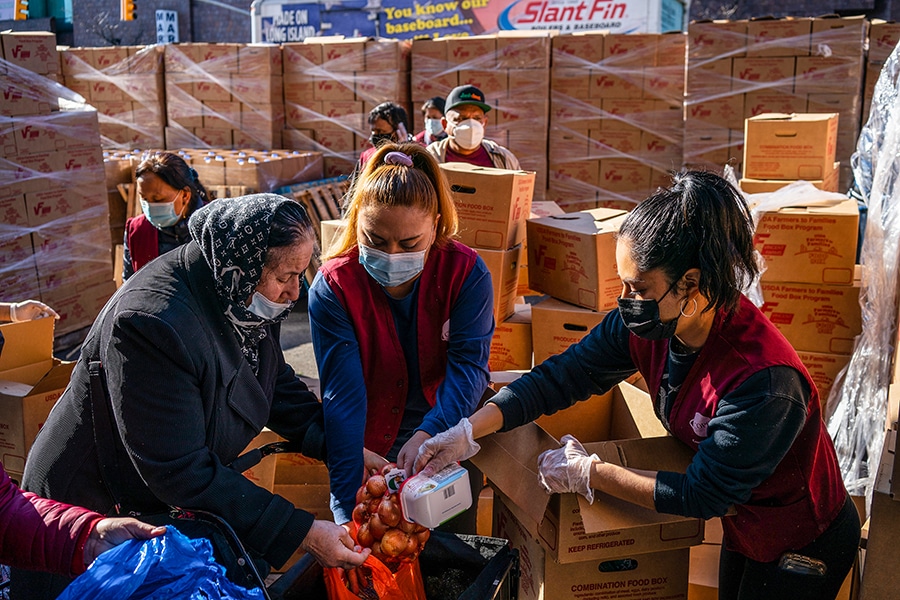
How will we eat in 2021? 11 predictions to chew on
Most forecasters agree that the pandemic and the stumbling economy will not deliver a year of frivolous food or "breakout" cuisines.
 People at a Brooklyn food pantry on Friday, Nov. 20, 2020. Meal kits from your favorite restaurant, snacks that help you sleep and other ways the food world may respond in a year of big changes; Image: Todd Heisler/The New York Times
People at a Brooklyn food pantry on Friday, Nov. 20, 2020. Meal kits from your favorite restaurant, snacks that help you sleep and other ways the food world may respond in a year of big changes; Image: Todd Heisler/The New York Times
Predicting food trends is a dubious exercise in any year, but those who dabble in the dark art of culinary prognostication have never faced a landscape harder to read than 2021.
Most forecasters agree that the pandemic and the stumbling economy will not deliver a year of frivolous food or “breakout” cuisines. There will be no next-gen Salt Bae or CBD-infused poke bowl doughnut ramen tacos to be optimized for Instagram.
But innovation and a restaurant rebound will come, eventually. The most optimistic believe that the cork will pop out of the bottle by summer. “If we can ride the wave of what’s going to be a crappy winter, it’s going to be like the Roaring Twenties all over again,” said Andrew Freeman, whose hospitality marketing and public relations companies, AF&Co. and Carbonate, issue an annual trend forecast.
Others see a much slower transition, in which home cooking remains popular and cautious diners venture out into a radically different restaurant landscape than the one they left. Economically, there will be two worlds, each eating very differently than the other. Independent restaurants will likely remain in free fall, while chains like Domino’s and McDonald’s continue to profit. Diners who made it through the pandemic with jobs and health intact are aching to spend money at restaurants. On the flip side are legions of Americans, including 2.3 million bar and restaurant workers, who remain unemployed or in a deep financial hole.
“It’s going to be ugly,” said Kara Nielsen, food and drink director at WGSN, a global trend forecasting company.
©2019 New York Times News Service




